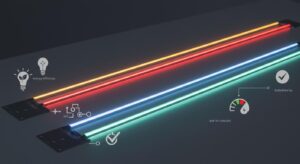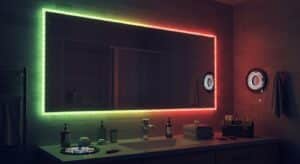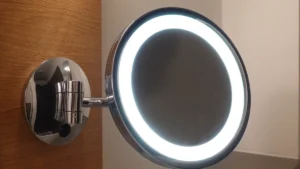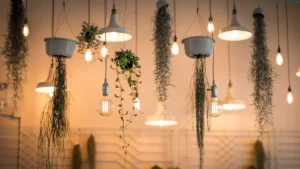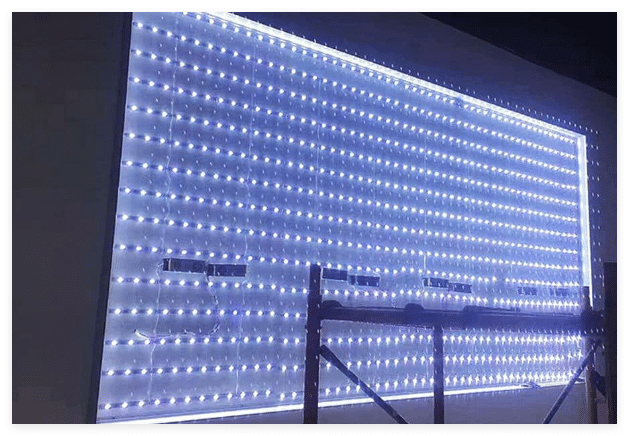
Lighting is important for creating the right mood at home. Adding an LED backlit bar can change any space quickly. It makes the area look stylish and modern. These lights save energy and look great while being useful too. Whether it’s your kitchen, living room, or bar area, LED bars are a neat and flexible choice.
You don’t have to be an expert to set them up. With good instructions, you can make your home look amazing and professional.
Key Takeaways
Measure the area and think about the lighting needs for each spot.
Pick LED bars with good brightness, easy adjustments, and simple installation for better lighting.
Use the right power supply and wiring to avoid overheating and stay safe.
Check your setup after installing to make sure the lights work well and features are fine.
Clean and check your LED bars often to keep them working longer and better.
Planning for LED Backlit Bar Installation
Checking the Space and Layout
Think about where you want the LED bar. Measure the area to make sure it fits well. Decide why you need the light. For example, bathroom lights need to be waterproof. Kitchen lights should be brighter. Look for problems like uneven walls or no power nearby. A good plan makes the room look better and work well.
Picking the Right LED Backlit Bar
Choose the best LED bar by comparing features. Use this table to help:
Feature | What It Means |
|---|---|
Light Quality | Includes brightness, colour options, and smooth lighting. |
Adjustability | Options like dimming and changing brightness automatically. |
Compatibility | Works with different screen sizes and curved screens. |
Easy to Install | Simple ways to set up, like clips or stands. |
Customer Reviews | Feedback about comfort, focus, and less eye strain. |
Also, think about how it helps your eyes and focus. These features make the light more useful and enjoyable.
Power Source and Wiring Tips
Pick the right power source for your LED bar. Check how much power it needs, even at its brightest. Make sure the power supply can handle it safely. Use a sensor to save energy by adjusting brightness. Set timers to control when the lights are on. Good wiring stops overheating and keeps the lights working well. Always stay safe with electrical work.
Step-by-Step Guide to Installing LED Light Bars
Getting the Surface and Tools Ready
Before you start, make sure the surface is clean. Dirt, grease, or rough spots can stop the LED bars from sticking well. Wipe the area with a damp cloth and let it dry fully. If the surface feels bumpy, sand it lightly to make it smooth.
Collect all the tools you’ll need to avoid stopping midway. Usually, you’ll need:
A tape measure to place the bars correctly.
A screwdriver or drill to fix the bars in place.
Sticky strips or brackets, depending on your LED bar type.
A voltage tester to check if the power is safe.
Having tools ready makes the job quicker and easier.
Tip: Measure twice to avoid placing the bars in the wrong spot.
Fixing the LED Bars in Place
Put the LED bars where you planned. Mark the spots with a pencil to avoid mistakes.
For sticky-backed LED bars, peel off the cover and press them firmly onto the surface. Hold them for a few seconds to stick well. If using brackets, line them up with your marks and screw them in place. Once secure, slide the LED bar into the brackets.
Note: Don’t tighten screws too much, as it can break the brackets or bars.
Connecting the LED Bars to Power
Hooking up the power correctly is important for safety and long use. First, find the power source. Make sure it matches the LED bar’s voltage and current needs.
When connecting the LED bars, remember:
LEDs need steady current to avoid damage from power changes.
Use a voltage higher than the minimum but keep the current low.
High-power LEDs can handle more current, up to over an ampere.
Use the right power adapter to control the current and voltage. Attach the wires securely, matching the positive and negative ends. If your LED bars are plug-and-play, just plug them into the socket.
Once connected, test the lights to see if they work. If they don’t turn on, check the wiring and power source again.
Tip: Add a surge protector to keep your LED bars safe from power spikes.
Testing the Installation
After securing the LED light bars and connecting them to power, testing is key. This step ensures everything works properly and is safe to use. Follow these simple steps to check your setup.
1. Check the Physical Setup
Look at the LED light bars closely. See if any wires are loose or brackets are not tight. Make sure the bars are straight and match your plan. Fix small problems before turning on the power.
2. Turn On and Watch
Switch on the power to light up the bars. Look carefully at the brightness. The light should be even across the bars. If some parts are dim, there might be a problem with the connection or the strips.
Tip: If the lights flicker, check the wiring and make sure the power source matches the voltage and current needs of the bars.
3. Compare to Standards
To check quality, compare your setup to common standards. These rules help you know if your lights will last and work well.
Standard | What It Checks |
|---|---|
IEC 62031 | General rules for LED modules. |
IEC 62612 | How well LED lamps perform. |
IES LM-79-08 | Tests for brightness and energy use. |
IES LM-80-08 | Measures how long the light stays bright. |
IES TM-21-2011 | Predicts how long the light will last. |
IES LM-84 | Checks brightness over time for lamps and fixtures. |
IES TM-28 | Predicts brightness over time for lamps and fixtures. |
Even without special tools, you can check basic things like brightness, colour, and heat.
4. Test Special Features
If your bars can dim or change colours, try these features. Adjust the settings to see if they work. For smart bars, connect them to your home system and test the controls.
5. Check for Heat
Let the bars run for a few minutes. Then, touch them to see if they feel too hot. LEDs should stay cooler than old-style lights. If they are very hot, there might be a problem with the power or airflow.
Note: If the bars feel too hot, turn them off right away. Check the manual or ask an electrician for help.
6. Final Check
When all tests are done, step back and look at the lights. Make sure they improve the space as you wanted. Move or adjust them if needed to get the best look and function.
By testing carefully, you can make sure your LED backlit bar works well and lasts a long time.
Troubleshooting Common Installation Issues
Fixing Uneven Lighting
Uneven lighting can make your LED light bars look bad. First, check if the bars are straight and spaced evenly. Misplaced bars often cause uneven brightness.
Look at the surface where the bars are fixed. Rough or bumpy areas can mess up the light spread. Smooth the surface by sanding or levelling it if needed. For places like bathrooms, make sure the surface is smooth and waterproof to avoid problems.
If the light is still uneven, check the LED strips. Broken or faulty strips might give dim or patchy light. Replace any damaged parts quickly. You can also use diffusers to spread the light evenly and make it softer.
Tip: A light meter can help you find dim spots. It ensures the brightness is even everywhere.
Addressing Flickering or Power Problems
Flickering lights can be annoying and show power issues. Start by checking the wires. Loose or bad connections often cause flickering. Tighten all wires and make sure they are secure.
Check if the power supply matches your LED light bars. Wrong power can make the lights unstable. Use a surge protector to stop sudden power spikes from damaging the lights.
Keep flicker levels low for better lighting. Aim for less than 8% flicker, or even 3% for no flicker. If flickering continues, get better LED drivers to fix the problem.
Note: Big LED lights in factories often fail within two years. Regular checks at home can stop this from happening.
Preventing Overheating and Overloading
Overheating can damage your LED light bars and make them stop working. To avoid this, manage heat well. Heatsinks help cool the lights, so keep them clear and working.
Use materials like aluminium for better heat control. Clean the bars and nearby areas to remove dust that traps heat. Check for loose wires and overheating parts during maintenance.
Make sure the power supply can handle the total wattage of your lights. Don’t overload it. Test and adjust the electrical parts to keep them safe.
Tip: Add ventilation near the lights to improve airflow and keep them cool.
By fixing these problems, your LED light bars will work well, stay safe, and last longer.
Improving LED Light Bar Use and Appearance
Adjusting Brightness with Dimmers
Dimmers let you change how bright your LED light bars are. This makes your space more useful for different activities. You can have bright light for work or soft light to relax.
Here’s why dimmers are helpful:
Energy Saving: Lower brightness uses less power, saving energy in dim areas.
Longer Life: Dimming helps your LED lights last longer, so you replace them less often.
Better Mood: Changing brightness creates a cosy feel for any time or activity.
Research shows people like about 14 lx brightness for reading or chatting. This proves adjustable lighting improves comfort and experience.
Tip: Pick dimmers that work well with your LED light bars to avoid flickering.
Trying Different Colours and Effects
LED light bars come in many colours, letting you customise your space. Colours like red, green, or blue can change how you feel. Warm light (around 3000K) feels cosy, while cool light (around 4000K) feels fresh and lively.
The colour rendering index (CRI) is also key. Good LEDs with CRI over 90 show colours clearly, perfect for places like kitchens or living rooms.
Feature | What It Means |
|---|---|
CRI-Ra | Shows how real colours look under the light. |
CRI-Ra ≥ 85 | Great for indoor spaces like museums or galleries. |
CRI-Ra > 90 | Gives bright, true-to-life colours. |
CCT | Tells if the light feels warm or cool. |
Playing with colours and effects can make your space more fun and useful.
Adding Smart Controls for Ease
Smart features make LED light bars easier and smarter to use. You can control brightness, colours, and schedules with a remote or app. Smart systems also save energy by adjusting light based on room use or daylight.
Smart-controlled and multi-colour LED light bars are now very popular. They offer more choices and fit well in modern homes.
Note: Smart features not only make life easier but also save energy, making them worth the cost.
By using dimmers, exploring colours, and adding smart controls, you can make your LED light bars more useful and stylish for your home.
Maintenance Tips for LED Backlit Bars
Cleaning and Dusting the LED Bars
Keeping your LED light bars clean helps them work well. Dust and dirt can block light and make them look dull. Use a soft cloth to gently wipe the bars. For tough dirt, slightly wet the cloth with water or mild soap. Don’t use strong chemicals, as they can harm the LED surface.
If your LED light bars are in busy areas like kitchens, clean them often. Regular cleaning keeps them looking good and stops dust from causing overheating.
Tip: Always turn off the power before cleaning to stay safe.
Inspecting for Wear and Tear
Checking your LED light bars often helps find problems early. Look for loose wires, cracks, or dim lights. Pay attention to power connections, as bad wiring can cause flickering or stop the lights from working.
Check if the brackets or sticky strips are holding the bars firmly. If you see damage, replace the broken parts quickly. This keeps your lights safe and working longer.
Note: Inspect every few months, especially in damp or hot places.
Ensuring Long-Term Durability
To make your LED light bars last longer, take care of them. LEDs are strong, but heat and frequent use can wear them out. Makers test LEDs to see how long they will last by checking brightness and failures.
The “L70” rating shows how long LEDs keep 70% of their brightness. For example, an LED with 30,000 hours L70 will stay bright for that time. This helps you know how long your lights will work well.
Make sure the power supply fits the LED light bars to avoid overloading. Use surge protectors to stop power spikes. Good airflow around the bars helps cool them and prevents overheating.
Tip: Follow the maker’s instructions to keep your lights working their best.
Adding LED backlit bars can make your home look modern and stylish. By planning well, installing carefully, and maintaining them, you can enjoy great results for a long time. Compared to old-style lights, LED bars have many benefits:
Feature | LED Light Bars | Traditional Lights |
|---|---|---|
Energy Use | Uses up to 90% less power | Uses more electricity |
Lifespan | Lasts up to 50,000 hours | Wears out faster |
Installation | Simple, often DIY | Often needs expert help |
Maintenance | Easy, just clean regularly | Needs bulbs changed often |
Appearance | Slim, modern look | Big and less flexible |
More people are choosing LED lights because they improve home lighting. In 2023, the market was worth USD 1.2 billion. By 2032, it could grow to USD 2.8 billion, with a yearly growth rate of 9.5%. This shows how popular energy-saving and flexible lights are becoming.
Start your project today. LED backlit bars not only make your home look better but also save energy and need less upkeep. With their sleek style and adjustable features, they are a great choice for any home.
FAQ
What tools are needed to set up LED backlit bars?
You’ll need a tape measure, drill or screwdriver, sticky strips, and a voltage tester. These tools help place the bars correctly, fix them securely, and ensure safe wiring.
Tip: Keep tools nearby to avoid stopping during the setup.
Can you install LED backlit bars on your own?
Yes, you can do it yourself. Follow the steps in this blog. Understand the power needs and safety tips before starting.
Note: If unsure about wiring, ask a skilled electrician for help.
How do you pick the right brightness for a room?
Think about the room’s purpose. Use brighter lights (around 4000K) for work areas. For relaxing spaces, pick warmer tones (around 3000K). Dimmers let you adjust brightness for different tasks.
How can you stop LED backlit bars from overheating?
Make sure there’s good airflow around the bars. Use aluminium to help with cooling. Clean dust off the bars often and check the power supply to avoid overloading.
Tip: Add a surge protector to protect against sudden power surges.
Are LED backlit bars good for saving energy?
Yes, they use up to 90% less energy than old lights. They also last longer, saving money and helping the environment.
Emoji: 🌱 Using LEDs is a green choice for your home.
See Also
Guide To Fitting LED Light Bars In Signage Boxes
Effective Methods For Installing RGB LED Strip Lights
Five Essential Tips For Choosing Ideal Backlit Bar Signs
